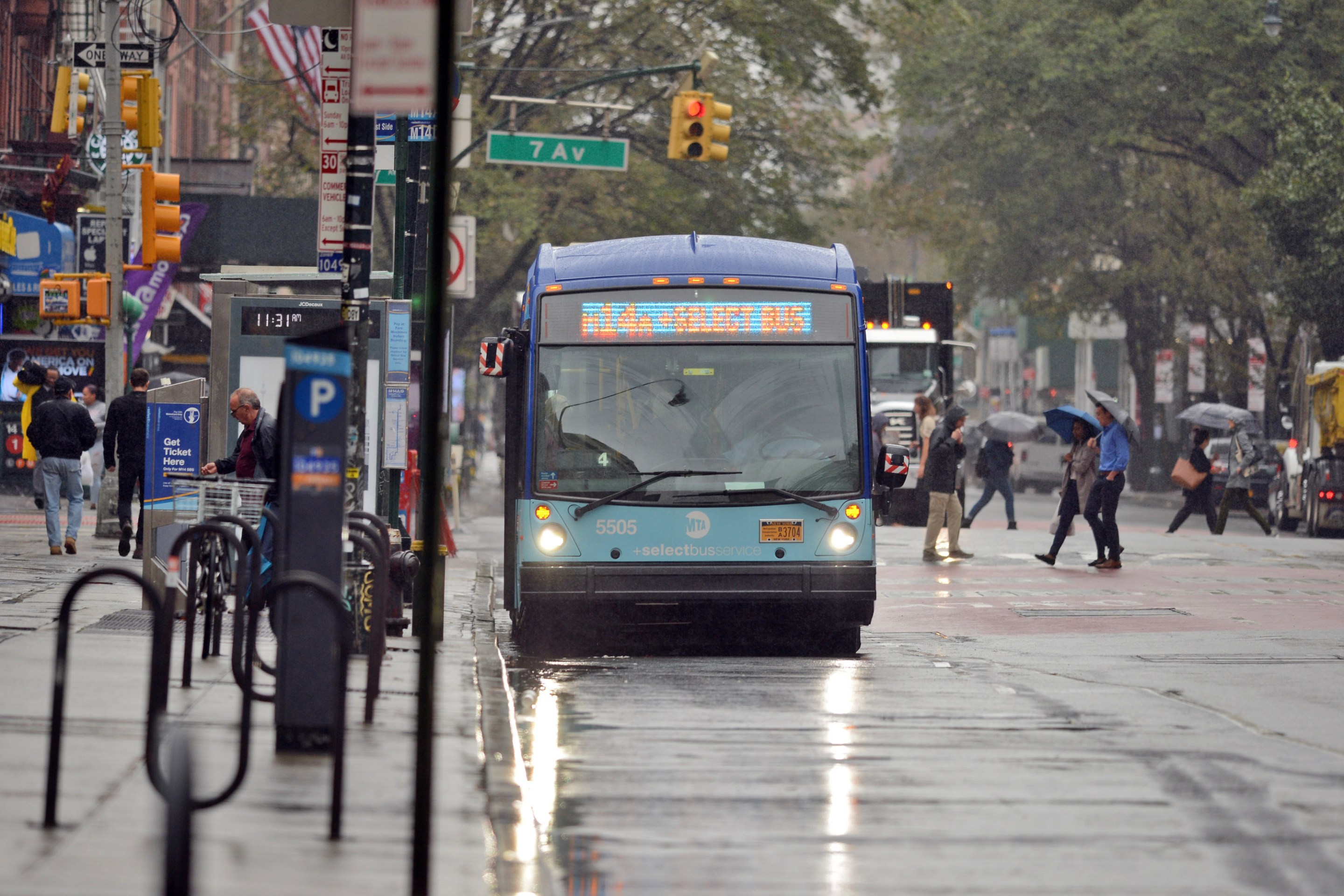![The city agency most likely to be involved in a traffic crash is missing from a city report on traffic crashes. Image: DCAS [PDF]](https://lede-admin.nyc.streetsblog.org/wp-content/uploads/sites/48/2015/05/DCAS_report.png?w=710)
A new report sheds light on the extent to which drivers working for city agencies are involved in traffic collisions [PDF]. But the picture is incomplete: NYPD, the agency involved in the most pedestrian injury claims, is withholding its crash information from the city's database.
Excluding the police department, drivers of city-owned vehicles were involved in eight of the 250 traffic fatalities in New York City last year, according to the Department of Citywide Administrative Services. Of those eight, half involved sanitation vehicles.
Of the 5,805 collisions tracked by the report, 584 resulted in injury, including 49 crashes that injured pedestrians and 15 that injured bicyclists. Of the agencies in the database, fire department vehicles were involved in the most crashes with injuries, at 148, followed by sanitation with 98.
If NYPD were included in the city’s data, it would likely outpace the rest of city government. The police department is far and away the top agency for pedestrian injury claims, according to Comptroller Scott Stringer. While NYPD's feed of reported crashes indicates whether the vehicle involved was a passenger car, truck, ambulance, fire truck, bus, or taxi, it doesn't say whether the driver was behind the wheel of a police vehicle.
DCAS is "still working with NYPD" to bring its crash data into the city's database, Deputy Commissioner for Fleet Management Keith Kerman told Streetsblog.
Almost half the crashes in the city's database involved sideswipes, 18 percent were rear-end collisions, and 9 percent were head-on crashes. Rear-end collisions, however, comprised almost one in three crashes with injuries. DCAS has begun piloting driver alert systems focused on sideswipe and rear-end crashes, Kerman said, and has made these types of collisions a focus of its training for city drivers.
DCAS determined that in 51 percent of all the collisions it tracked, the city driver could have avoided the crash. For injury crashes, DCAS said 44 percent could have been prevented by the city driver.
The report breaks down collisions by community board district but does not give specific locations for each crash.
Kerman declined to address how the city fleet's safety record compares to drivers overall. "The city’s fleet has a unique composition and very specific operations which are different than general use of private vehicles," he said. "Our focus with this reporting is identifying trends and reducing and preventing collisions."
Kerman said DCAS plans on releasing reports about crashes involving the city fleet each spring. However, the document summarizes information in a PDF, rather than making the underlying data accessible. "This is a new, first-of-its-type report," Kerman said. "As we move forward, we will further advance the reporting and formats."





